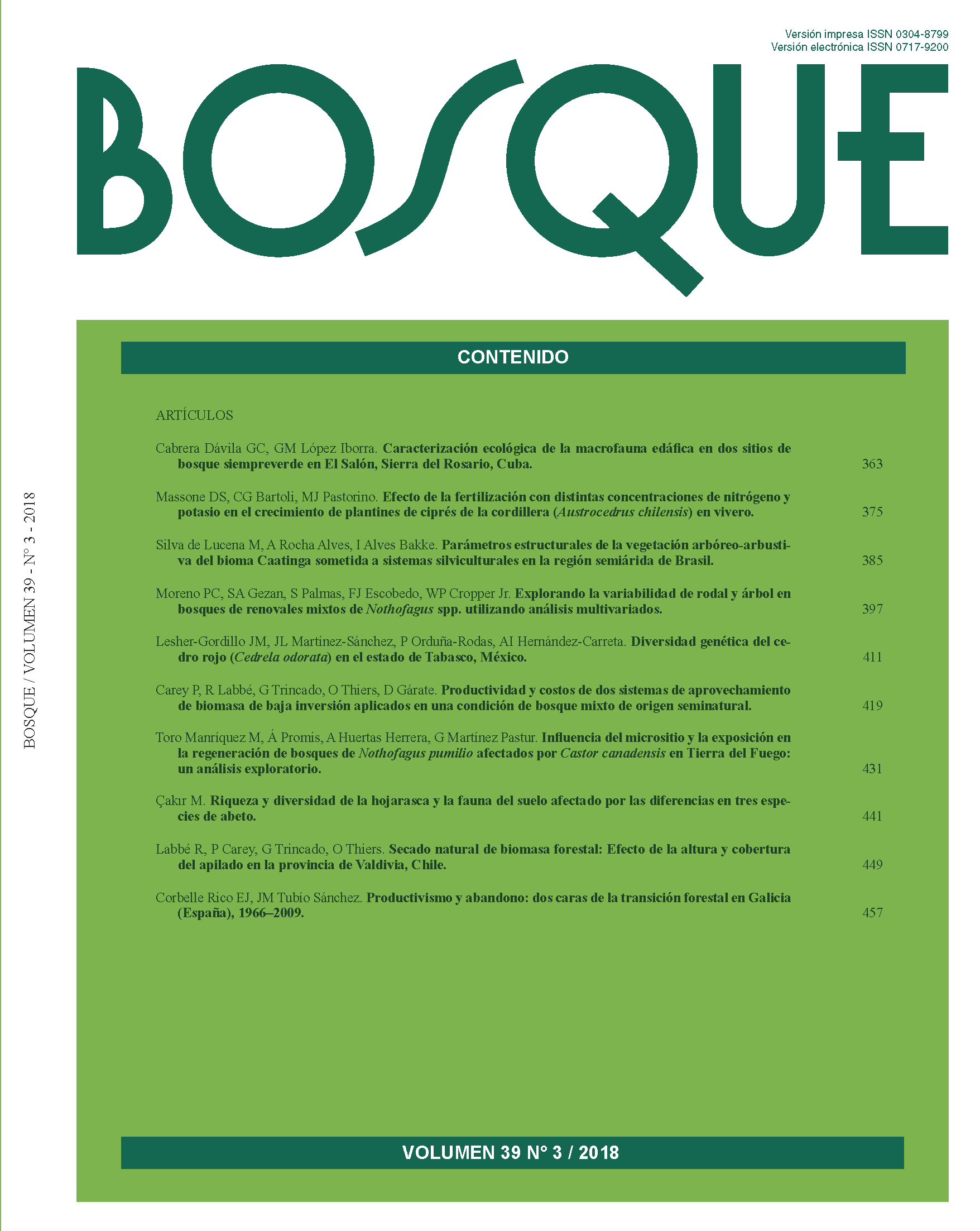Diversidad genética del cedro rojo (Cedrela odorata) en el estado de Tabasco, México
Contenido principal del artículo
Resumen
El cedro rojo (Cedrela odorata) es una especie maderable de gran valor. Actualmente está catalogada como especie protegida, así como en la lista roja de la UICN debido a la disminución de sus poblaciones silvestres principalmente por la fragmentación del hábitat y deforestación. El objetivo del presente estudio fue conocer la estructura y diversidad genética del cedro rojo en el estado de Tabasco, México. Se analizaron 68 muestras de C. odorata provenientes de los estados de Tabasco y Chiapas. El ADN fue extraído con el
método CTAB (cetyl trimethyl ammonium bromide). La amplificación del ADN se realizó utilizando 10 loci microsatélites (SSRs), nueve de ellos previamente reportados como polimórficos para la especie y uno diseñado (AB0507) con el programa Primer 3. Para los análisis de los datos obtenidos se utilizaron los programas NTsys pc, GenAlex y Cervus. La diferenciación genética fue alta (Fst = 0,419), y la diversidad genética baja (Ho = 0,297). En comparación con otros estudios, este mostró menor diversidad genética de la especie, lo que indica una mayor erosión genética en la actualidad. Con este estudio se pueden sugerir poblaciones más aptas para la obtención de germoplasma y así contrarrestar la pérdida de diversidad genética de esta especie en la región.

